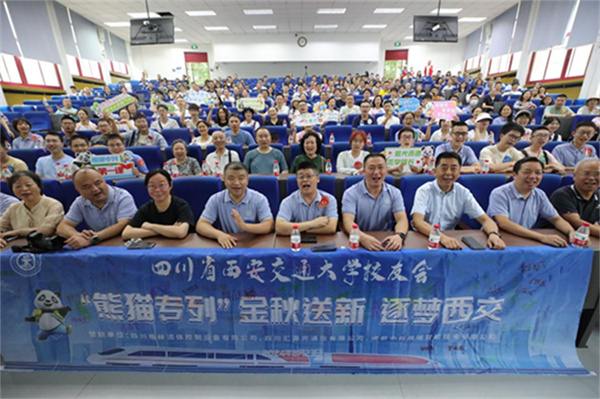XJTU researchers make progress in studying mechanism of solvent influence on chemical reactions
In the field of organic chemistry, the inverse-electron-demand Diels−Alder (iEDDA) reaction involving electron-deficient heterocyclic azo compounds is an important synthetic method, widely applied in bioorthogonal coupling, total synthesis of natural products, modification of metal-organic frameworks, functionalization of carbon nanotubes, and construction of microarrays. Typically, these reactions occur in solvents like methanol, producing diazine compounds. However, when hexafluoroisopropanol (HFIP) is used as the solvent, an anomalous N1/N4 cycloaddition occurs, yielding 1,2,4-triazine products. Previously, there was a lack of systematic and in-depth theoretical research on the selectivity and pathway influence of HFIP in these reactions.
Professor Duan Xinhua's team from the School of Chemistry at Xi'an Jiaotong University (XJTU), in collaboration with Professor K. N. Houk from the University of California, Los Angeles, conducted detailed theoretical and computational studies on the reaction phenomena of 1,2,4,5-tetrazine with enamines in HFIP.
They found that in common solvents like methanol or chloroform, the reaction follows the classical C3/C6 cycloaddition pathway. However, in HFIP, after the formation of the first nitrogen-carbon bond, the reaction undergoes a novel 3,3-sigma rearrangement assisted by HFIP molecule-mediated deprotonation. Dale L. Boger from the Scripps Research Institute and his graduate student, Zhu Zixi, assisted with experimentation for this research.
The study reveals the unique role of solvent effects in cycloaddition reactions, increasing our understanding and ability to control the selectivity of these reactions. The research findings, titled Computational Studies of Reactions of 1,2,4,5-Tetrazines with Enamines in MeOH and HFIP, were published in the Journal of the American Chemical Society. Assistant Professor Ma Pengchen from the School of Chemistry of XJTU is both the primary and corresponding author of the paper.
-
XJTU researchers reveal new mechanism of anionic redox reactions in sodium-ion batteries
August 05,2024
-
XJTU research team deepens understanding of Papaver species
August 02,2024
-
XJTU research team makes major progress in improving high-temperature energy storage performance of TTBs ferroelectric ceramics
July 25,2024
-

Xi'an Jiaotong University welcomes 2024's freshers
August 25, 2024
